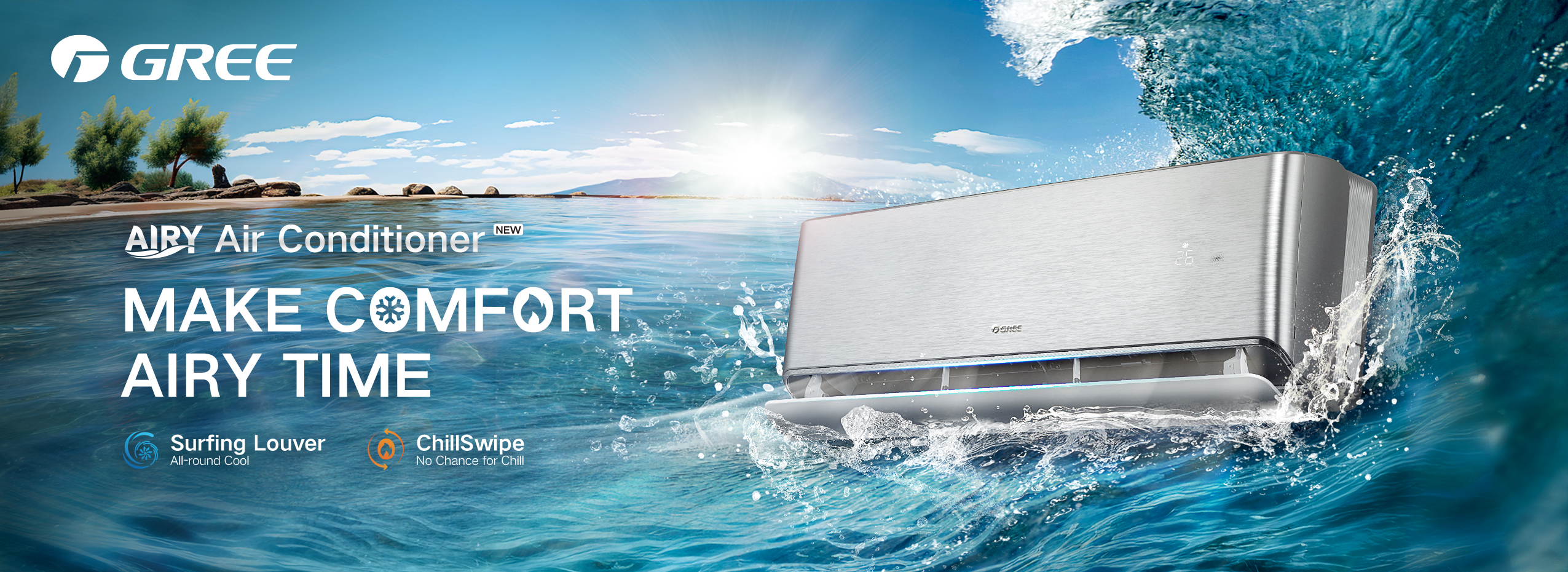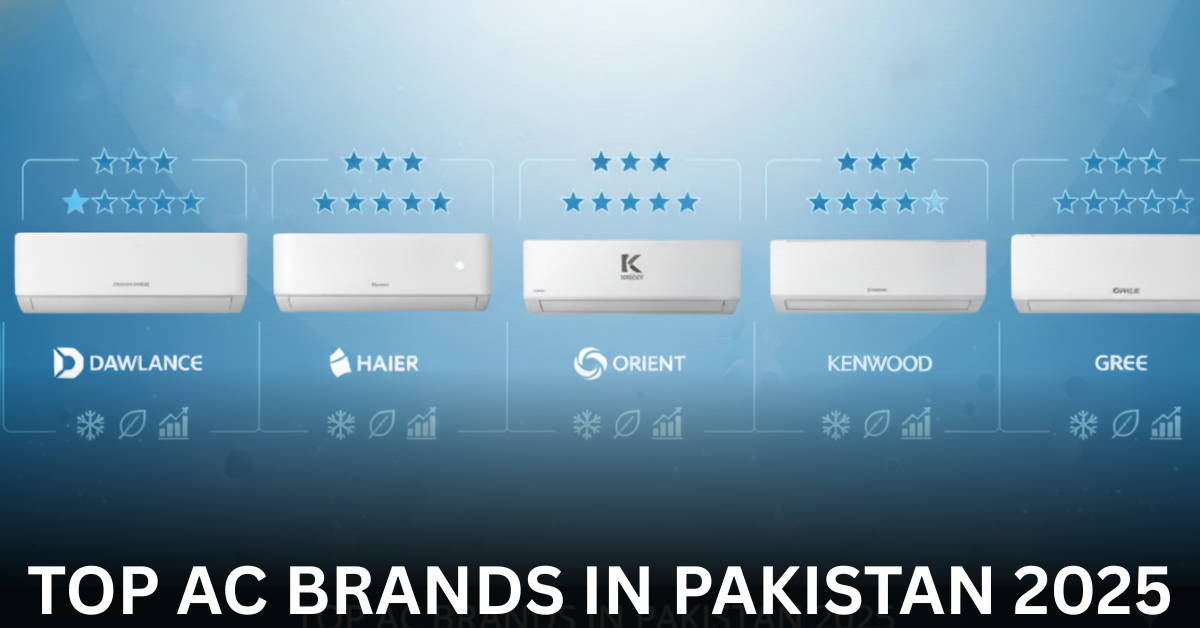Electricity consumption is a growing concern for homeowners and businesses alike. Traditional air conditioners often waste energy due to constant on-off cycling of the compressor, leading to inefficiencies and high bills. But Gree DC Inverter ACs change the game with smart engineering that can cut energy usage by up to 60%. Let’s explore the technical innovations behind this performance.
Technical Innovations
-
Variable-Speed Compressor
Traditional ACs use fixed-speed compressors: they blast at maximum power until they hit the desired temperature, then shut off, only to restart again—causing energy surges.
Gree DC Inverter ACs, in contrast, deploy a variable-speed compressor that continuously modulates its motor speed to maintain a set temperature. This eliminates repeated starts/stops and results in smoother operation and dramatically reduced energy spikes.
-
Smart Compressor Management with PID Control
High-end Gree models leverage a sophisticated PID (Proportional-Integral-Derivative) control algorithm, embedded in their PCB (Printed Circuit Board). Here’s what it does:
- Monitors real-time temperature changes and load fluctuations.
- Calculates precise adjustments needed in compressor speed.
- Prevents excess energy draw by throttling power intelligently.
This is a crucial component of how “energy-saving inverter ACs” achieve such efficiency.

-
Twin Rotary Compressors
Some Gree models, like the GREE Fairy Series GS-18FITH6C, feature twin rotary DC compressors. This offers:
- Smoother operation with minimal vibration.
- Reduced mechanical friction.
- More efficient power-to-cooling conversion.
These qualities directly contribute to lower energy consumption.
-
Optimized Refrigerant Flow with R32
The selection of refrigerant and its flow path significantly impacts thermal efficiency. Many Gree models now use R32 refrigerant, noted for:
- Superior heat exchange properties.
- Lower Global Warming Potential (eco-friendly).
Better refrigerant dynamics means the system achieves set temperatures using less energy than older refrigerants.
-
High SEER Ratings
The efficiency of air conditioners is often measured using the Seasonal Energy Efficiency Ratio (SEER):
- Conventional AC: SEER rating ~10–12.
- Gree DC Inverter ACs: SEER often exceeds 18.
This means they deliver the same or better cooling with almost half the energy input, justifying the “up to 60% saving” claim.

-
Real Usage Example
In real-world conditions, a conventional 1.5-ton AC may draw 1.6–2.0 units/hour, while a Gree DC inverter AC might only draw 0.8–1.0 units/hour. This translates into massive savings during hot months with prolonged use.
- Best Energy-Efficient Models (2025)
Here’s a quick tech snapshot of some top-performing Gree models:
- GREE Fairy Series GS-18FITH6C (1.5 Ton) — Twin rotary compressor, high SEER.
- GREE Pular T3 Black 18PITH21B (1.5 Ton) — Turbo cooling with smart load control.
- Gree 18AITH23 T3 DC Inverter 2025 (1.5 Ton) — R32 refrigerant, PID intelligent algorithm..
-
User Habits That Amplify Energy Savings
To maximize efficiency:
- Match AC tonnage to room size.
- Use Eco or Sleep modes during off-hours.
- Maintain filters and outdoor units for airflow efficiency.
- Keep insulated rooms to reduce compressor load.
Want to explore other top inverter brands too? Compare all Air Conditioners at Lahore Centre.
-
Why Purchase from Lahore Centre?
- Enjoy exclusive discounts on Gree models.
- Benefit from flexible installment plans.
- Access trusted installation and service support.
View the full Gree DC Inverter AC price in Pakistan 2025 list to pick your ideal fit.
The Bottom Line
Gree DC inverter air conditioners deliver up to 60% energy savings through real engineering innovations—variable-speed compressors, PID control, efficient refrigerants, and advanced SEER performance. These machines aren’t just coolers; they’re intelligent, high-efficiency systems built to lower bills while keeping you comfortable.
Explore the latest Gree models to find the best one for your needs today.
FAQs
Q1: What is PID control in Gree inverter ACs and how does it save energy?
PID control is a smart algorithm that continuously adjusts the compressor’s speed based on temperature and load feedback. This avoids unnecessary power usage by preventing full-speed starts and frequent cycling.
Q2: Why do twin rotary compressors consume less power than single-rotary ones?
Twin rotary compressors distribute workload across two rotors, minimizing friction and energy loss, resulting in smoother and more efficient operation.
Q3: How does SEER rating impact actual power savings in Gree ACs?
SEER reflects seasonal performance. A higher SEER like 18 means the AC provides the same cooling at nearly half the energy compared to units with a SEER of 10–12.
Q4: Are R32 refrigerants more efficient than R410A in Gree ACs?
Yes—R32 has better thermal conductivity and a lower GWP, meaning it cools more effectively with less environmental impact and energy use.
Q5: Can Gree inverter ACs operate efficiently under low-voltage conditions?
Many Gree models feature low-start-voltage technology that allows efficient operation even when the supply voltage is unstable or drops to around 150V.







